Sore nipples from breastfeeding: Causes and proper care

This post was created in collaboration with midwife Vivian.
Click here to read further information about midwife Vivian.
Even before the baby is born, your body is preparing itself for nine months for breastfeeding your little miracle. Nevertheless, the first breastfeeding attempts can be painful for new moms and cause irritated and sore nipples, especially in the early stages. Although this pain and initial complications often don’t last long, it’s good to know how to properly care for sore nipples while breastfeeding to relieve pain and prevent infection. You can find important information and helpful tips on the topic of breastfeeding, sore nipples and proper care in the following article.
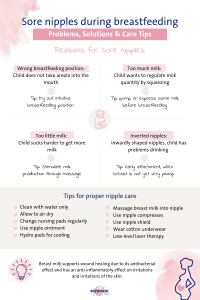
The breast: structure, changes and breastfeeding
Before we explain in more detail how sore nipples occur during breastfeeding and how they can best be treated, we would like to take a look at the structure of your breasts and the processes involved in breastfeeding.
A woman’s breast consists mainly of connective and fatty tissue surrounding the mammary gland. The mammary gland is divided into 15 to 20 smaller glands, from each of which the milk ducts branch off. The mammary glands produce breast milk, which is then transported via the milk ducts to the nipple. The nipple, which provides the point of contact for the baby during breastfeeding, is located in the center of the circular areola. In addition, the areola contains the so-called Montgomery glands, which produce a natural oil. Behind the breast lies the large pectoral muscle, which covers the ribs. Overall, the breast is permeated with blood vessels, nerves and lymphatic vessels.
In the first weeks of pregnancy, the breasts already change and the entire body prepares for breastfeeding. Externally, this can be seen by the fact that the breast increases in volume and becomes plumper. Inside the breast, this change is caused by the increase in glandular tissue. The nipples and areola also become larger and darker, which is due to increased melatonin production. This pigmentation serves to make it easier for the baby to find the nipples when breastfeeding. Another change in the areola can be seen in the Montgomery glands, as these glands also become larger and visible. If you want to know more about physical changes during pregnancy, feel free to read this article.
The hormone prolactin stimulates milk production, which already happens during pregnancy. If the baby is laid down to breastfeed after birth, sucking stimulates the formation of the hormone oxytocin. Oxytocin formation is also stimulated by skin-to-skin contact. This is why skin-to-skin contact and bonding immediately after birth is so important. This hormone also provides the so-called milk-giving reflex, which causes milk to be released into the baby’s mouth. Finding the nipple is made easier for the baby by the smooth muscle cells that are found in the areola and nipple and respond to mechanical stimuli. The baby’s mouth stimulates the muscles and makes them stiff so that the baby can better enclose the nipple.
When nipples hurt while breastfeeding: How do sore nipples happen?
Particularly during the first attempts at breastfeeding and in the initial phase of breastfeeding, irritated, sore nipples can occur. The reason for this is that the breasts and nipples are especially sensitive in the first few days after the birth, as the tissue expands as a result of the milk injection and the blood supply increases. For most women, the onset of milk does not occur until two to four days after birth. However, the pain in the breast and nipples occurs even before that.
Especially in the beginning, babies are still latched on very often to encourage milk production. The more often the baby drinks, the faster the milk comes in. This means that new moms may breastfeed up to 12 times a day, which can sometimes take a relatively long time and put an unusual strain on the breasts. In addition, there is the pressure caused by the baby’s sucking force, which is an unfamiliar sensation for the body. The fact that the nipples become irritated and sore in the first few days after birth is therefore completely normal and occurs in most cases. Normally, mother and child get used to the new situation relatively quickly and thus the nipples also adapt to daily breastfeeding. However, if the pain and soreness of the nipples worsens or lasts longer, there may be various reasons for this.
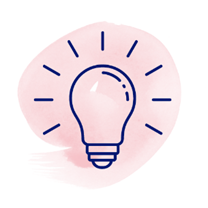
Important: If you have very severe pain or your blood warts become cracked or even start to bleed, you should definitely ask your midwife for advice and help.
Other causes of sore, painful nipples while breastfeeding
Sore nipples due to breastfeeding position
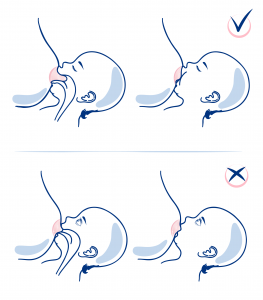 In many cases, breastfeeding position can be a trigger for sore nipples and problems with breastfeeding. If the baby is not positioned correctly, the entire areola may not be captured and only the nipple may be sucked. This results in increased pressure because the baby’s sucking force cannot be distributed. Correct latch-on is therefore of great importance for both mother and child. The nipple should be aimed at the baby’s upper palate so that the baby can grasp the nipple better and suck on it well. In addition, detaching the baby from the breast too quickly can also lead to small injuries and tears. So make sure to slowly and gently detach your baby from the breast. You can use your finger to help by gently pushing it into the corner of your baby’s mouth to release the vacuum.
In many cases, breastfeeding position can be a trigger for sore nipples and problems with breastfeeding. If the baby is not positioned correctly, the entire areola may not be captured and only the nipple may be sucked. This results in increased pressure because the baby’s sucking force cannot be distributed. Correct latch-on is therefore of great importance for both mother and child. The nipple should be aimed at the baby’s upper palate so that the baby can grasp the nipple better and suck on it well. In addition, detaching the baby from the breast too quickly can also lead to small injuries and tears. So make sure to slowly and gently detach your baby from the breast. You can use your finger to help by gently pushing it into the corner of your baby’s mouth to release the vacuum.
A good breastfeeding position for the first breastfeeding attempts is the “intuitive breastfeeding position” in which the baby lies on its stomach on the breast and the mother leans back in a relaxed position. This position encourages the baby’s natural search reflex. In addition, skin-to-skin contact also helps to further stimulate oxytocin production and thus the milk production.

Tip: Your midwife or a lactation consultant can give you tips on breastfeeding your baby. It is best to ask in the first few days whether your baby is latched on correctly to the breast in order to prevent possible complications early on.
Too much or too little milk as a reason for sore nipples
Another reason for irritated, sore nipples can be milk flow. If too much milk comes out of your breasts or it comes out too fast, your baby may try to regulate the amount of milk and press on your nipples. You can counteract this problem by pumping or expressing a little milk from your breasts before breastfeeding. On the other hand, it may be that not so much milk comes out of your breasts at the beginning and your baby therefore sucks harder on your nipple to get more milk. In this case, you can try to stimulate the flow of milk with a gentle massage or more frequent feedings.
Vasospasm as a reason for painful nipples
Vasospasms are cramps in the nipples that often occur after breastfeeding. These spasms are triggered by the contraction of blood vessels in the nipple and can cause a pulling sensation or even a sharp pain. Cold air or friction can also trigger vasospasms. In addition, a magnesium or calcium deficiency can be possible causes. You should discuss this with your midwife or lactation consultant or consult a doctor.
Sore nipples and the anatomy of the baby’s mouth
In some cases, the baby’s frenulum or lingual frenulum being too short can be the cause of breastfeeding problems and sore nipples. In these cases, the baby cannot open its mouth wide enough and therefore cannot grasp the nipple with the areola properly. This can cause pain for the mother and frustration for the baby because he or she is not getting enough milk. A frenulum that is too short must be diagnosed by medical professionals. However, this may not be detected directly during screening exams. If you suspect that your child has a frenulum that is too short, you should talk to your midwife or one of your doctors. In most cases, the problem can be corrected with a small operation.
Anatomy of the nipple as a cause of sore nipples
The shape of the nipple can also play a big role when it comes to problems with breastfeeding. Normally, the nipples are curved outward and rise from the areola. In some cases, however, the nipples may be shaped inward. These are so-called inverted nipples, which usually have a genetic cause and are often due to shortened milk ducts. In the most extreme form of an inverted nipple the nipples no longer react at all to mechanical stimuli and are therefore permanently inverted. When breastfeeding, babies therefore have difficulty grasping the nipple and sucking on it, which can quickly lead to frustration in children. In addition, breastfeeding can cause negative pressure in the breast, which can be particularly painful. In this case, it can help to put the baby to the breast early on. The baby’s sucking can cause the nipples to come out and the milk ducts to be stretched. It is important that the breast is not so plump yet, as the nipples can then protrude more easily. However, it can take a little time until the nipples are elastic enough to be grasped properly and well by the baby.
If the nipples do not stand up on their own or if they are inverted, it is best to have a consultation with your midwife or a doctor beforehand. Sometimes it can be helpful to start treating inverted nipples before the birth. Don’t worry: there are always solutions for women with inverted nipples.
Correct nipple care: What do I need to bear in mind when breastfeeding?
To ensure that your sore nipples heal quickly or to prevent irritation in the first place, you can follow a few tips for nipple care. From proper cleaning and nipple care with cremes, to small tips for relieving pain and healing wounds – we tell you what you need to know.
Proper cleaning of (sore) nipples
Proper cleaning of nipples is extremely important to avoid bacteria formation and thus prevent infections. For example, nipples should only be washed with water when showering and not additionally with soap. Many soaps are fat-soluble and can thus remove the body’s own natural oils and fats, which are important for the skin. For example, showering with a fat-soluble shampoo can cause the body’s own oil from the Montgomery glands to be washed away. However, this oil is important for the nipples because it moisturizes and protects them. Soaps and shower gels can therefore cause additional dryness and strain the nipples. You should also not wash your nipples too often. Even before and after breastfeeding, this is not necessary. The bacteria on your breasts actually provide a benefit to your baby in that they can help develop the microbiome in your baby’s gut. The microbiome is the term used to describe all the important bacteria and viruses in the gut that act as digestive helpers. If a few drops of breast milk remain on your nipple after breastfeeding, you can simply massage it in gently.

Tip: If your nipples are already a little irritated or the skin is sensitive, it is best to let them air dry or just dab them very gently with a soft towel so as not to irritate them further.
Many moms use nursing pads during breastfeeding to keep the nipples clean and dry, thus reducing the risk of breast infection. At the same time, nursing pads prevent milk stains from forming on clothing. To ensure that nursing pads are always clean and germ-free, they must be changed regularly. How often this is the case depends on the woman’s milk flow. If the milk flow is heavy, they should be changed more frequently than if the milk flow is low. Even if the nursing pads should remain dry all day, however, they must be changed at least once a day. The warmth and moisture on the breast allows bacteria to collect optimally, which can result in infection. Too much moisture also softens the nipples and promotes irritation or even minor injuries. For this reason, nursing pads should be absorbent and breathable, such as the nursing pads from sanosan. Also the “airing” of nipples without clothing and nursing pads can be helpful to counteract too much moisture and bacteria formation.
Proper care of (sore) nipples
Nipple ointments or creams are excellent for nipple care. They moisturize the stressed nipples, relieve pain or itching and can support wound healing. Many nipple ointments are specially formulated for nursing mothers and therefore do not need to be washed off the breast when it is time to breastfeed. If you apply the ointment in a thin layer directly after breastfeeding, it is usually already absorbed by the next time. However, there are a few things to keep in mind when using nipple ointments. Firstly, you should not use too much of it and not use the cream for prevention. The body itself produces skin lipids and natural oils that protect and nourish the skin. If one permanently uses an additional ointment, the sebaceous glands and Montgomery glands produce less to no of the body’s own fats. It is also important to pay attention to the ingredients used when choosing an ointment. In particular, if the cream does not have to be washed off and the baby may still absorb residues of it, creams should be used that do not contain critical ingredients.
For example, nipple ointments made from 100% natural lanolin are suitable here. Lanolin is also known as wool wax and protects the wool of sheep from dirt and rain. It resembles the natural fat layer of the human skin and is therefore particularly suitable as a care product. This is because lanolin not only has a refatting effect, but also supports the skin’s own protective barrier, has an anti-inflammatory effect and a low allergy potential. Another advantage is the taste and odor neutrality of the natural product, which means that babies are not irritated during breastfeeding if some of the cream remains.
The nipple ointment from sanosan also consists of 100% lanolin and is very well tolerated by mother and child, as no other ingredients such as parabens or fragrances are used. The good skin tolerance was additionally proven by clinical tests.
Pain relief and healing for sore nipples
Do you already have painful or cracked nipples? Then there are a few things you can do to get relief. The first step for irritated nipples is pretty obvious: make your own breast milk. It contains a wide variety of minerals and vitamins and provides your baby with everything he or she needs. The best for your baby is also good for you. Because breast milk has an anti-inflammatory effect and promotes wound healing. So if you have sore nipples, you can simply massage in the remaining drops of your breast milk gently after breastfeeding. Of course, you can also put a few drops of your breast milk on your breast before breastfeeding or in between to support healing.

Tip: Breast milk generally helps against small wounds or skin irritations due to its antibacterial effect and can also help, for example, with an irritated baby’s bottom, itching and chapped lips.
For irritated nipples, hydro pads can also help relieve breast pain by cooling the sore area and creating good healing conditions for the irritated skin. Placing the pads in the refrigerator for an hour before use will actually enhance the cooling effect. But heat can also help with irritation, namely in the form of nipple compresses made of warm water or black tea. However, black tea can leave a bitter aftertaste on your breast, which your baby probably doesn’t like. In addition, the warm compresses should not be used directly before breastfeeding. The heat stimulates blood flow to the nipples, which can make them even more sensitive to pain. In any case, just like nursing pads, compresses should be changed regularly to prevent bacteria buildup.
A nipple shield that you can put on during breastfeeding breaks will also prevent your nipples from rubbing against your clothes and irritating your sensitive skin even more. There are quite a few different types of nipple shields available in different materials or shapes. For example, there is an elastic protector that can cover the entire breast or small metal caps specifically for the nipples. Special silver caps additionally care for and soothe irritated nipples.

Tip: You can also support the healing of your nipples with the right clothing. Cotton underwear is light and irritates the nipples less. Cotton fabrics are also more permeable to air, which is good for wound healing.
Recently, laser therapies for sore nipples have been offered in some hospitals. This is a low-level laser therapy that promotes blood circulation, boosts metabolism and relieves pain. The laser treatment supports the patient’s own wound healing and has an anti-inflammatory and decongestant effect. The painless therapy takes only a few minutes and can vary from one to five treatments. It is best to ask your midwife whether laser therapy can be useful in your case and where it is offered.
Don’t forget:
Even if you experience pain or problems with breastfeeding at first, it is important that you don’t drive yourself crazy about it. It is perfectly okay and even good to ask for help and get tips from your midwife. For both you and your baby, the situation is initially unfamiliar and new, so it is completely normal that you need time to get used to breastfeeding and adjust to each other. You’ll see, no matter what solution you find for yourselves, soon you’ll be a well-rehearsed dream team!
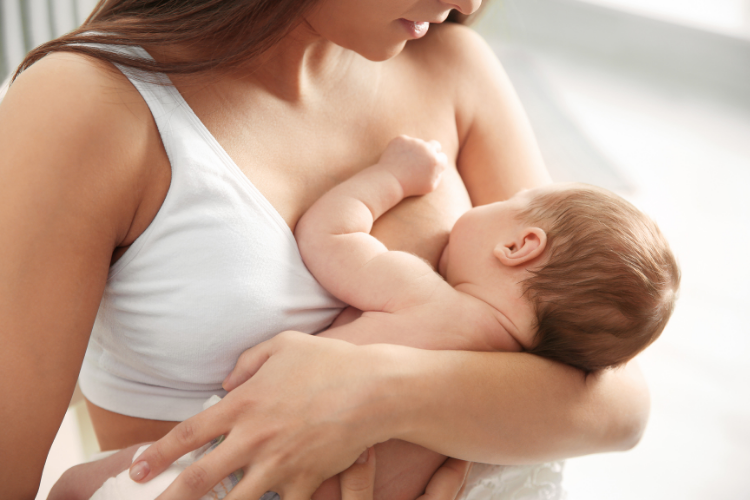
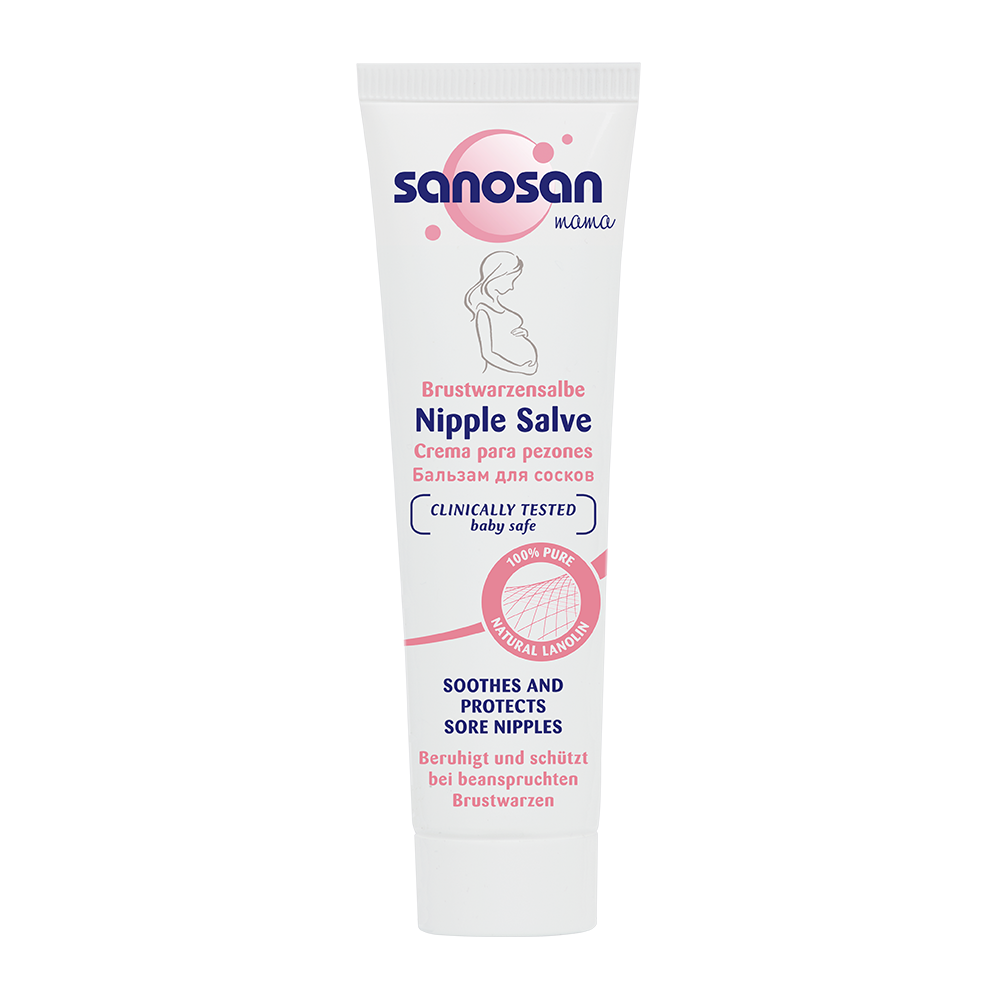
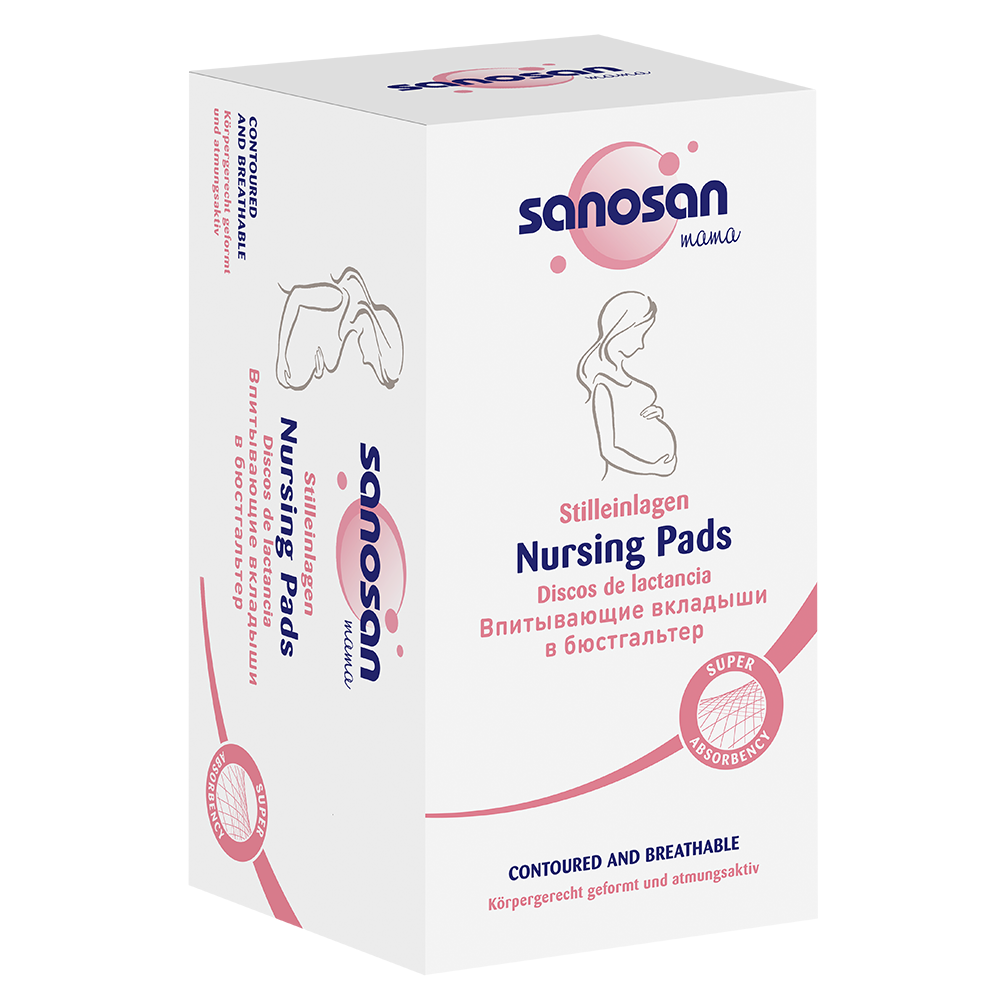
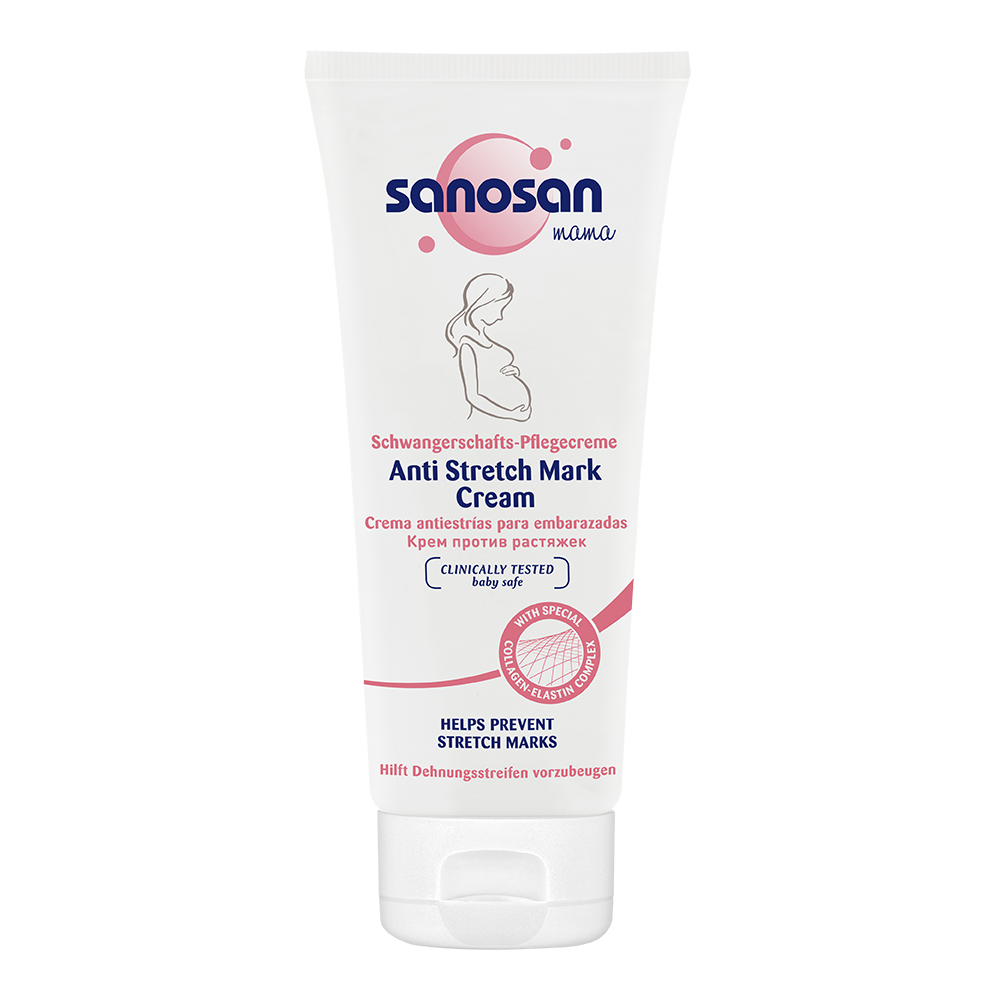
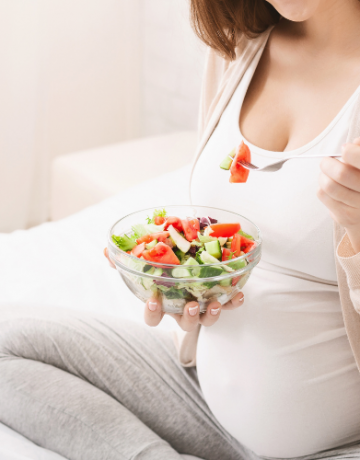
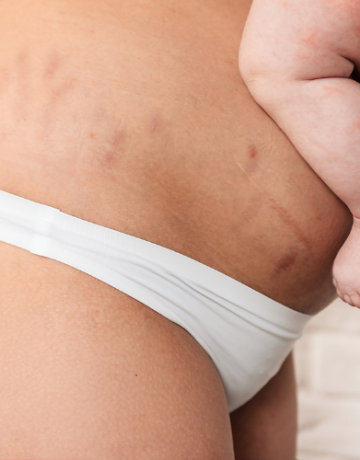
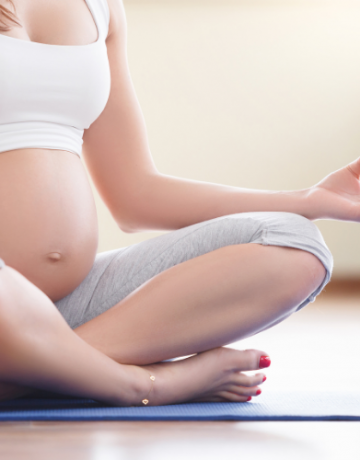
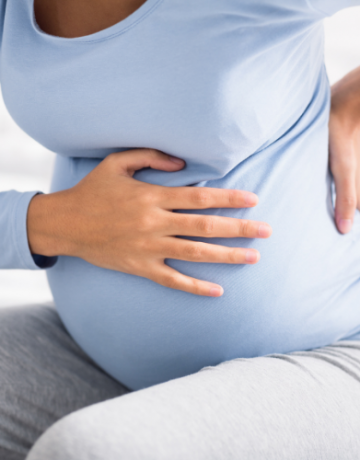
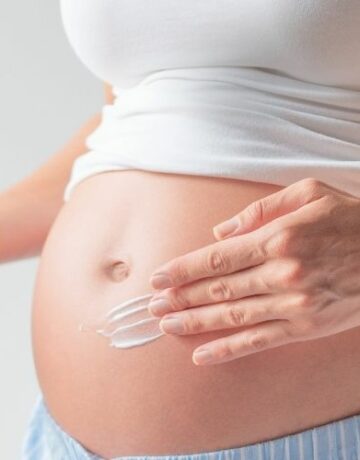
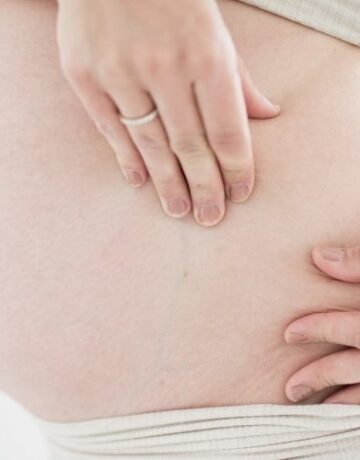
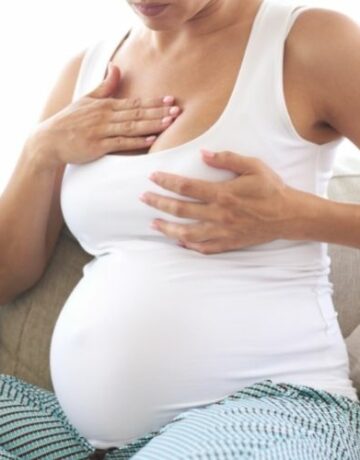
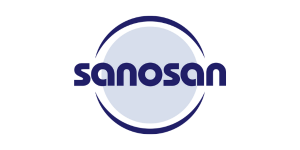
Comments (0)